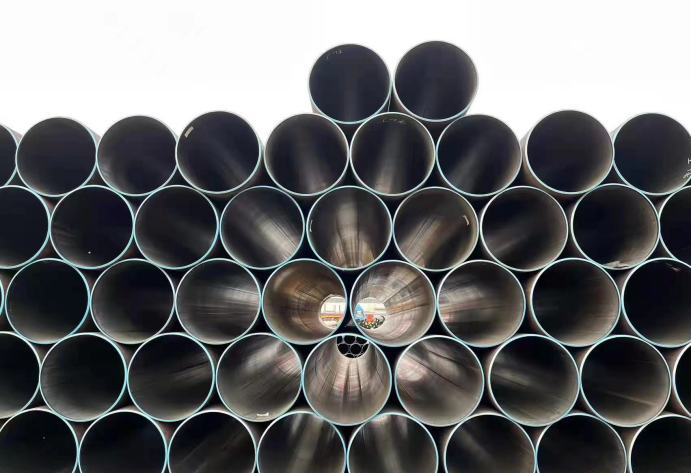Sharing China-Made with Global Customers

Sharing China-Made with Global Customers

Cracks may appear in the welding process of high-frequency welded pipe, which are manifested in long cracks, some regular cracks, irregular cracks, etc

1. Poor quality of raw materials
In the production and manufacturing of welded steel pipes, the problem of excessive total width of diamond grade raw materials at the edge burrs often occurs. During welding, the burrs are easy to produce intermittent cracks for a long time. The total width of raw materials is too large, resulting in too full hole of extrusion roller plate, forming welding peach shape, large external welding scar, small or no internal welding reinforcement, and cracking after straightening.
2. Edge corner joint
It is a very common welding condition for the edge corner connection of the pipe blank. When the outer arc of the extrusion roll is too large, the pipe blank will be insufficient filled in the extrusion roll, and the parallel surface will change into V-shape, resulting in the lack of penetration of the inner weld. In addition, the extrusion roll will be damaged for a long time, resulting in insufficient extrusion force, deformation and corner connection.
3. Unscientific selection of main parameters of processing technology
The main parameters of the manufacturing process of high frequency welded pipe include welding rate, welding temperature, welding current, extrusion force, specification of opening angle, etc., so it must be matched effectively. Otherwise, the welding quality may be damaged.
Too high or too low speed will lead to impermeability of low-temperature welding, and the flattening of weld will produce cracks. The extrusion force is insufficient, and the metal at the welding edge cannot be fully compressed, so that the residue in the weld is not easy to be discharged, and the compressive strength of the weld becomes low. If the extrusion force is too large, large flames will be splashed, and the molten metal oxide will be extruded together with the metal material of the plastic deformation layer. After scarring, the weld will become thinner and the compressive strength of the weld will be reduced, resulting in cracking. Therefore, appropriate extrusion force is the premise of weld quality.
If the opening angle is too large, the high-frequency proximity effect will be reduced, the eddy current loss will increase, and the welding temperature will be reduced. If the welding maintains the original speed, cracks will appear. If the opening angle is too small, the welding current is unstable, and small cracks will appear at the extrusion point.
There are many factors causing weld cracks in the production and manufacture of high frequency welded pipe, and the prevention methods are also different. There are too many parameters in the whole process of high-frequency welding, and the shortcomings of a certain stage will damage the weld quality, so it must be strictly controlle